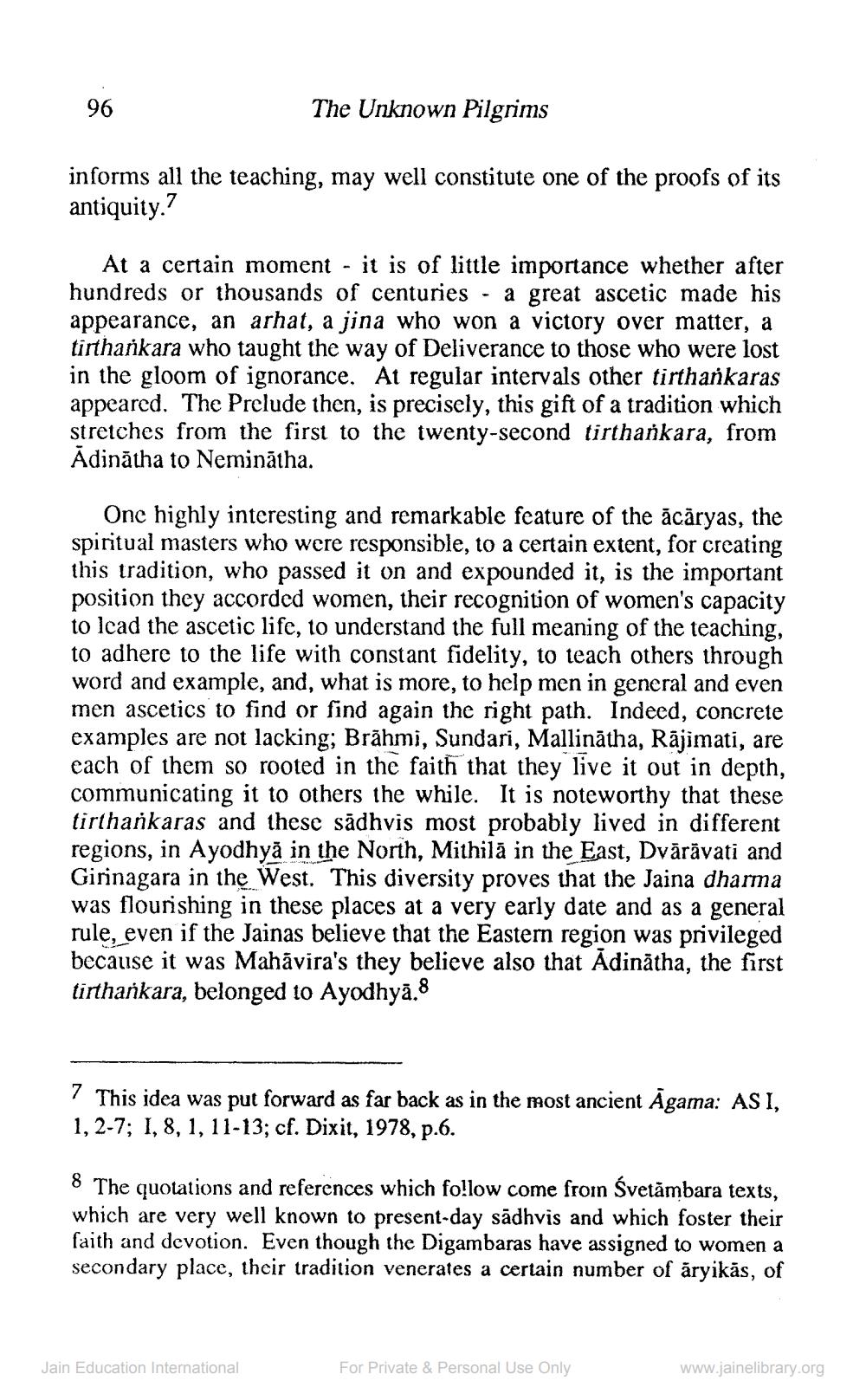________________
96
The Unknown Pilgrims
informs all the teaching, may well constitute one of the proofs of its antiquity.?
At a certain moment - it is of little importance whether after hundreds or thousands of centuries - a great ascetic made his appearance, an arhat, a jina who won a victory over matter, a tirthańkara who taught the way of Deliverance to those who were lost in the gloom of ignorance. At regular intervals other tirthankaras appeared. The Prelude then, is precisely, this gift of a tradition which stretches from the first to the twenty-second tirthańkara, from Adinātha to Neminātha.
One highly interesting and remarkable feature of the ācāryas, the spiritual masters who were responsible, to a certain extent, for creating this tradition, who passed it on and expounded it, is the important position they accorded women, their recognition of women's capacity to lcad the ascetic life, to understand the full meaning of the teaching, to adhere to the life with constant fidelity, to teach others through word and example, and, what is more, to help men in general and even men ascetics to find or find again the right path. Indeed, concrete examples are not lacking; Brāhmi, Sundari, Mallinātha, Räjimati, are each of them so rooted in the faith that they live it out in depth, communicating it to others the while. It is noteworthy that these tirthankaras and these sădhvis most probably lived in different regions, in Ayodhyā in the North, Mithilā in the East, Dvārāvati and Girinagara in the West. This diversity proves that the Jaina dharma was flourishing in these places at a very early date and as a general rule, even if the Jainas believe that the Eastern region was privileged because it was Mahavira's they believe also that Adinātha, the first tirthankara, belonged to Ayodhyā.8
7 This idea was put forward as far back as in the most ancient Agama: ASI, 1,2-7; I, 8, 1, 11-13; cf. Dixit, 1978, p.6.
8 The quotations and references which follow come from Svetămbara texts, which are very well known to present-day sādhvis and which foster their faith and devotion. Even though the Digambaras have assigned to women a secondary place, their tradition venerates a certain number of aryikās, of
Jain Education International
For Private & Personal Use Only
www.jainelibrary.org




